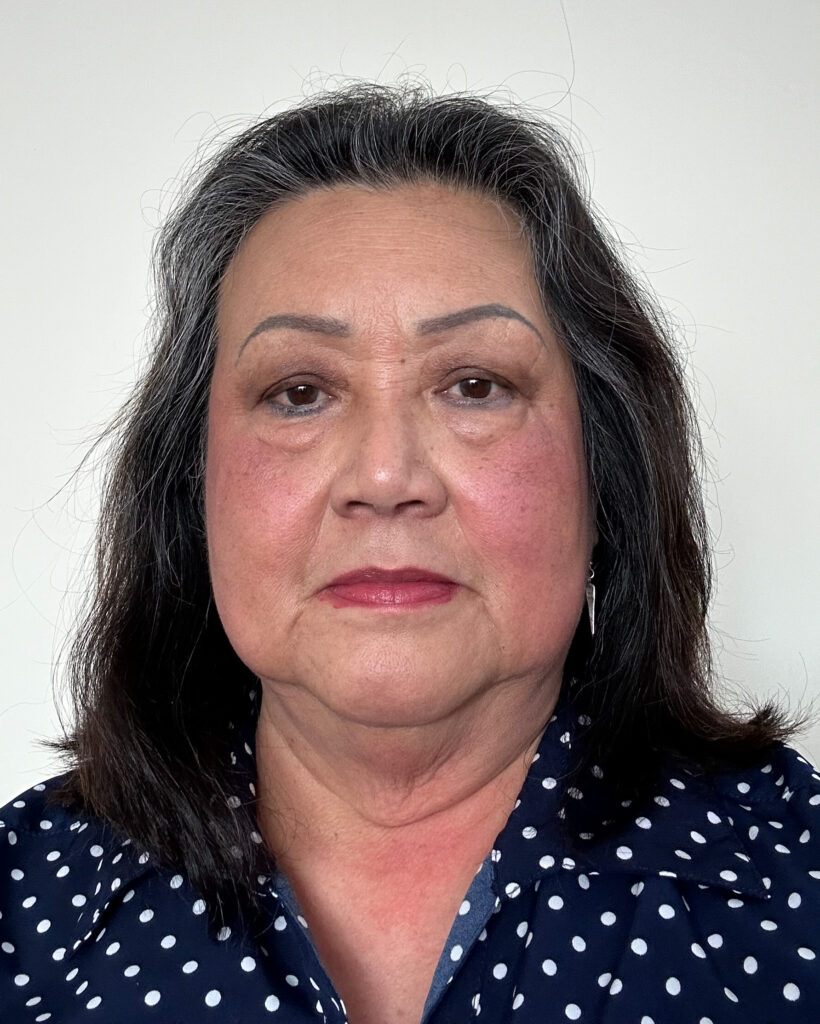Antimicrobial resistance (AMR) is a plague in health-care systems and infections caused by multi-resistant organisms are a serious global threat.1

Resistant micro-organisms are on the rise with AMR frequently limiting treatment options, and potentially even resulting in infections that have no suitable therapies.2 Therefore, it is important to use antimicrobials, including antibiotics, optimally to prevent both adverse drug reactions in patients and harm to the population as a whole from AMR.
Antimicrobial stewardship (AMS) is a coherent set of actions which promote the responsible use of antimicrobials to — among other things — counteract AMR. AMS programmes decrease unnecessary exposure to antimicrobials, improve cure rates, reduce adverse drug reactions, slow the emergence of AMR, and reduce hospital costs.3, 4, 5

Nurses are ideally placed to enhance AMS, due to the size of their workforce, their contact with patients and their wide skill-set. Yet they are under-utilised and the potential of their role in this work is not well understood.
Experts and clinical leaders recently called for our government to urgently prioritise AMS.6 They set out the need for strong interdisciplinary leadership and support for AMS activities to ensure effective action in all health-care settings.
The 2018 report, Kotahitanga – Uniting Aotearoa against infectious disease and AMR,7 from the Prime Minister’s chief science advisor, stated, “the time for action is now: the longer we wait to unite against these threats, the more suffering New Zealanders will face”.
It was recommended that New Zealand immediately “develop new clinical care standards for AMS to address gaps in the current health and disability standards”. The report said these should be extended to cover all health professionals involved with antimicrobial use, including doctors, nurses, pharmacists, midwives, and dentists in the community.

These roles needed to have a strong equity focus, with minimum full-time equivalents required for AMS pharmacists, doctors and nurses, as appropriate, at all hospitals (both public and private) and primary health organisations.8
New Zealanders are very high users of antibiotics. Our rate of antibiotic consumption in 2019 was the fifth highest of 31 OECD nations.9 Antibiotic use in primary care is a strong driver of AMR and, in New Zealand, over 95 per cent of antibiotics are dispensed and consumed in the community.10
It is estimated that at least half of the antibiotics prescribed in New Zealand are inappropriately used to treat self-limiting (often viral) respiratory tract infections.11
The threat of AMR in New Zealand is even greater for Māori and Pacific people, who are disproportionately affected by infectious disease (eg skin infections and sore throats, leading to risk of rheumatic fever) and have the greatest need for effective antimicrobial therapy.12
New Zealanders are very high users of antibiotics. Our rate of antibiotic consumption in 2019 was the fifth highest of 31 OECD nations.
Nurses ideally placed
Nurses comprise most of the health-care workforce13 but are significantly under-utilised in AMS.8 Registered nurses (RNs) are central to infection prevention and control teams and are ideally placed to enhance AMS activities due to their wide skillset.11
However, to succeed in this role, RNs require specific AMS education,14, 15, 16 increased participation in AMS activities, and organisational support.8, 17

Also, further clarity is required on how RNs should carry out this role in a complex environment where engagement and collaboration with other health professionals is essential.
RNs are often the first point of contact for patients seeking advice on how to manage their illness and on treatment options (eg antibiotics). They are well-positioned to promote, teach, and support appropriate use of antibiotics and engage in AMS activities to reduce AMR.
In inpatient settings, RNs are crucial in guiding appropriate durations of antibiotic treatment, determined by individual patient response.18
Potential opportunities for RNs to engage and participate in AMS have not been fully explored. However, formal inclusion of nurses in AMS activities has been associated with improved nurse knowledge and confidence, and in some cases improved clinical outcomes for patients.19
RNs are often the first point of contact for patients seeking advice on how to manage their illness and on treatment options, such as antibiotics.
Research is needed to improve our understanding of the nature, scope, and influence of the nurse’s role in AMS, how nurses enact and carry out this role, and what support nurses need.
Therefore, we call on RNs to participate in AMS activities in both primary and secondary care settings and to engage in programmes that will enhance their practices in AMS. They need to take on the role of AMS stewards in their clinical setting and to work with doctors and pharmacists to implement programmes to slow the relentless advance of AMR.
Developing antimicrobial guidelines
There is currently an opportunity for RNs to contribute to AMS nationally, through the development of national cross-sector antimicrobial guidelines. We are members of the group of clinicians and researchers working on these guidelines which should provide a cornerstone tool of AMS and promote effective, sustainable, safe and equitable antimicrobial use.
You can find some initial information on the guideline development here. If you are interested in being informed about the progress with this or contributing to guideline development, please email: [email protected].
Infectious diseases are a major threat to the health and well-being of New Zealanders and COVID-19 serves as a stark reminder of the seriousness of these threats, physically, economically, and socially.
Infectious diseases are a major threat to the health and well-being of New Zealanders and COVID-19 serves as a stark reminder of the seriousness of these threats, physically, economically, and socially.
The science underlying the development of AMR and the solutions to AMR are evident. We need to focus our efforts on infection prevention, rather than waiting for people to get sick and then being forced to focus on treatment. We need to curb inappropriate use of antimicrobials.
The chief science advisor’s report describes the strategies needed to tackle the impending threat of AMR in New Zealand. However, as a nation, we have fallen pitifully short on implementation. The time to act is now.
Preparing and supporting RNs to participate fully in this work will greatly help us to make the changes in antimicrobial use that are needed.
Gigi Lim, RN, PhD, is a senior lecturer in the school of nursing, Faculty of Medical and Health Sciences, University of Auckland.
Sharon Gardiner, MClinPharm, PhD, is the antimicrobial stewardship (AMS) pharmacist at Health New Zealand/Te Whatu Ora – Canterbury/Waitaha, and co-lead of the New Zealand antimicrobial stewardship and infection pharmacist expert group.
Stephen Ritchie, PhD, is an infectious disease physician, and associate professor
of molecular medicine and pathology, Faculty of Medical and Health Sciences,
University of Auckland.
References
- World Health Organisation. (2014). Antimicrobial resistance: global report on surveillance 2014.
- Salam, M. A., Al-Amin, M. Y., Salam, M. T., Pawar, J. S., Akhter, N., Rabaan, A. A., & Alqumber, M. A. A. (2023). Antimicrobial Resistance: A Growing Serious Threat for Global Public Health. Healthcare, 11(13).
- Abbo, L., Smith, L., Pereyra, M., Wyckoff, M., & Hooton, T. M. (2012). Nurse Practitioners’ Attitudes, Perceptions, and Knowledge About Antimicrobial Stewardship. Journal for Nurse Practitioners, 8(5), 370-376.
- Carter, E. J., Greendyke, W. G., Furuya, E. Y., Srinivasan, A., Shelley, A. N., Bothra, A., Saiman, L., & Larson, E. L. (2018). Exploring the nurses’ role in antibiotic stewardship: A multisite qualitative study of nurses and infection preventionists. American Journal of Infection Control, 46(5), 492-497.
- Khan, F., Arthur, J., Maidment, L., & Blue, D. (2016). Advancing antimicrobial stewardship: Summary of the 2015 CIDSC Report. Canada Communicable Disease Report, 42(11), 238-241.
- Gardiner, S. J., Duffy, E. J., Chambers, S. T., Thomas, M. G., Addidle, M., Arnold, B., Arroll, B., Balm, M. N., Perales, C. B., Berger, S., Best, E., Betty, B., Birch, M., Blackmore, T. K., Bloomfield, M., Briggs, S., Bupha-Intr, O., Burns, A., Campbell, C., … Sen Yew, H. (2021). Antimicrobial stewardship in human healthcare in Aotearoa New Zealand: urgent call for national leadership and co-ordinated efforts to preserve antimicrobial effectiveness. New Zealand Medical Journal, 134(1544), 113-128.
- Ministry for Primary Industries & Ministry of Health. (2017). New Zealand Antimicrobial Resistance Action Plan.
- Office of the Prime Minister’s Chief Science Advisor. (2022). Kotahitanga: Uniting Aotearoa against infectious disease and antimicrobial resistance — A report from the Prime Minister’s Chief Science Advisor, Kaitohutohu Mātanga Pūtaiao Matua ki te Pirimia.
- Pattis, I., Weaver, L., Burgess, S., Ussher, J. E., & Dyet, K. (2022). Antimicrobial Resistance in New Zealand — A One Health Perspective. Antibiotics, 11(6), 778.
- Duffy, E., Ritchie, S., Metcalfe, S., Van Bakel, B., & Thomas, M. G. (2018). Antibacterials dispensed in the community comprise 85%-95% of total human antibacterial consumption. Journal of Clinical Pharmacy and Therapeutics, 43(1), 59-64.
- Thomas, M. G., Smith, A. J., & Tilyard, M. (2014). Rising antimicrobial resistance: a strong reason to reduce excessive antimicrobial consumption in New Zealand. New Zealand Medical Journal, 127(1394), 72-84.
- Bennett, J., Zhang, J., Leung, W., Jack, S., Oliver, J., Webb, R., Wilson, N., Sika-Paotonu, D., Harwood, M., & Baker, M. G. (2021). Rising Ethnic Inequalities in Acute Rheumatic Fever and Rheumatic Heart Disease, New Zealand, 2000-2018. Emerging Infectious Diseases, 27(1), 36-46.
- Nursing Council of New Zealand. (2019). Te Ohu Mahi Tapuhi o Aotearoa/The New Zealand Nursing Workforce: A profile of Nurse Practitioners, Registered Nurses and Enrolled Nurses 2018-2019.
- Danielis, M., Regano, D., Castaldo, A., Mongardi, M., & Buttiron Webber, T. (2022). What are the nursing competencies related to antimicrobial stewardship and how they have been assessed? Results from an integrative rapid review. Antimicrobial Resistance & Infection Control, 11(1), 153.
- Hendy, A., Al-Sharkawi, S., Hassanein, S. M. A., & Soliman, S. M. (2023). Effect of educational intervention on nurses’ perception and practice of antimicrobial stewardship programs. American Journal of Infection Control, 51(1), 41-47.
- Rout, J., Essack, S., & Brysiewicz, P. (2021). Guideline recommendations for antimicrobial stewardship education for clinical nursing practice in hospitals: A scoping review. South African Journal of Critical Care, 37(3).
- Padigos, J., Ritchie, S., & Lim, A. G. (2020). Enhancing nurses’ future role in antimicrobial stewardship. Collegian, 27(5), 487-498.
- Kilpatrick, M., Hutchinson, A., Manias, E., & Bouchoucha, S. L. (2023). Nurses’ knowledge and implementation of antimicrobial stewardship and infection prevention strategies in acute paediatric settings. Journal of Hospital Infection, 137, 54-60.
- Gotterson, F., Buising, K., & Manias, E. (2021). Nurse role and contribution to antimicrobial stewardship: An integrative review. International Journal of Nursing Studies, 117, 103787.


